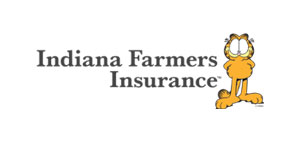Water damage can be classified into three main categories based on the level of contamination and health risks associated with the water.
Key Takeaways:
- Category 1 water damage involves clean water that does not pose significant health risks.
- Category 2 water damage consists of visibly contaminated water that may cause illness if ingested or contacted.
- Category 3 water damage is the most severe type and poses significant health risks due to dangerous matter present in the water.
- Understanding the different categories of water damage is crucial for addressing and mitigating the damage effectively.
- Prompt action is necessary for preventing further damage and ensuring the health and safety of the occupants.
Category 1: Clean Water Damage
Category 1 water damage refers to situations where the water is clean and free from sewage or toxins. This is the least severe type of water damage and typically occurs due to issues such as broken pipes, water supply line problems, or overflow from sinks and bathtubs.
Although Category 1 water damage may not pose immediate health risks, it is crucial to address it promptly to prevent further damage and mold growth. Acting quickly can help minimize the extent of the damage and reduce the chances of costly repairs.
When dealing with Category 1 water damage, the first step is to stop the source of water if possible. Next, remove any standing water and dry the affected areas thoroughly. Using fans and dehumidifiers can aid in the drying process and prevent mold from forming.
| Characteristics of Category 1 Water Damage: |
|---|
| – Water is clean and free from contaminants |
| – Originates from broken pipes, water supply line issues, or overflow from sinks and bathtubs |
| – Does not pose significant health risks |
| – Requires prompt action to prevent further damage and mold growth |
Remember, even clean water damage should be taken seriously and addressed promptly. If you’re unsure about the extent of the damage or how to handle it, it’s recommended to seek professional assistance to ensure a thorough and effective restoration process.
Category 2: Grey Water Damage
Category 2 water damage includes water that is visibly contaminated and may contain microorganisms or chemicals that can be harmful to human health. This type of damage typically arises from sources such as malfunctioning appliances like toilets, washing machines, and sump pumps backups. Grey water damage can also be caused by leaks or overflow from these appliances.
Grey water is not as hazardous as category 3 (black water) damage but should still be taken seriously and addressed promptly. Exposure to grey water can lead to health issues if ingested or if it comes into contact with open wounds or mucous membranes. It is important to refrain from attempting to clean up grey water damage without the necessary protective equipment, as it can put you at risk.
To effectively mitigate grey water damage, it is recommended to hire professionals with experience in proper cleanup and restoration techniques. They have the expertise and equipment to safely remove contaminated water, disinfect affected areas, and restore your property to its pre-damage condition.
| Characteristics of Category 2 Water Damage |
|---|
| Visibly contaminated water |
| Potential presence of microorganisms or chemicals |
| Can cause illness if ingested or contacted |
| Requires professional cleanup and restoration |
By understanding the different categories of water damage, you can better assess the severity of the situation and take appropriate actions. Remember to contact a professional restoration company to handle category 2 water damage, as they have the knowledge and tools to safely and effectively mitigate the risks associated with grey water damage.
Category 3: Black Water Damage
Category 3 water damage is the most extreme type and involves water that is highly contaminated, posing serious health risks to individuals exposed to it. This type of water damage can occur due to sewage backups, flooding seawater, or contaminated ground surface water. It is critical to take immediate action when encountering Category 3 water damage to protect the health and safety of everyone involved.
Black water contains dangerous substances such as harmful bacteria, viruses, and chemicals. Exposure to this contaminated water can lead to severe illnesses and infections. It is essential to understand that even minimal contact with black water can be hazardous, including ingestion, inhalation, or skin contact.
Due to the potential health risks associated with Category 3 water damage, it is strongly advised to seek professional assistance for cleanup and restoration. Specialized equipment and expertise are required to handle the removal, decontamination, and drying processes effectively. Prompt action is crucial to prevent further damage and minimize health risks.
| Characteristics of Category 3 Water Damage |
|---|
| Highly contaminated water |
| Potentially containing sewage, harmful bacteria, viruses, and chemicals |
| Presents significant health risks when exposed |
| Requires professional cleanup and restoration |
Remember, Category 3 water damage should never be underestimated or taken lightly. If you encounter black water in your home or property, it is essential to prioritize your safety and seek immediate professional assistance to handle the cleanup and restoration process.
Conclusion
Understanding the three categories of water damage is crucial for effectively responding to and mitigating the damage in your home. Whether you’re dealing with clean water damage (Category 1), grey water damage (Category 2), or black water damage (Category 3), knowing the characteristics of each category will help you take the appropriate actions to address the situation.
Category 1 water damage involves clean water that is free from sewage and toxins. This type of damage typically occurs due to broken pipes, water supply line issues, or overflows from sinks and bathtubs. While it may seem less severe, prompt action is still necessary to prevent further damage and the potential growth of mold and mildew.
Category 2 water damage, on the other hand, involves visibly contaminated water that could cause illness if ingested or contacted. This includes water from appliances like toilets, washing machines, and sump pump backups. Professional assistance is highly recommended when dealing with this category to ensure proper cleanup and disinfection.
Finally, Category 3 water damage is the most extreme and poses serious health risks. This type of damage contains dangerous matter such as sewage, flooding seawater, or contaminated ground surface water. Immediate action is crucial in these situations, as exposure to black water can lead to severe illnesses and infections.
By understanding the categories of water damage and their characteristics, you can better assess the severity of the situation and take appropriate measures to address it. Remember, the sooner you act, the better chance you have of minimizing the damage and ensuring the safety of your home and loved ones.
FAQ
What are the three categories of water damage?
The three categories of water damage are Clean Water Damage, Grey Water Damage, and Black Water Damage.
What is Category 1: Clean Water Damage?
Category 1 water damage involves clean water that does not pose significant health risks. Examples include broken pipes, water supply line issues, and overflow from sinks and bathtubs.
What is Category 2: Grey Water Damage?
Category 2 water damage involves visibly contaminated water that can cause illness if ingested or contacted. It includes water from appliances like toilets, washing machines, and sump pump backups.
What is Category 3: Black Water Damage?
Category 3 water damage is the most severe type and contains dangerous matter such as sewage, flooding seawater, and contaminated ground surface water. It poses serious health risks and requires immediate action.
Why is understanding the categories of water damage important?
Understanding the categories of water damage is crucial for properly addressing and mitigating water damage in your home. It helps determine the level of risk and the appropriate action to take in each situation.
















